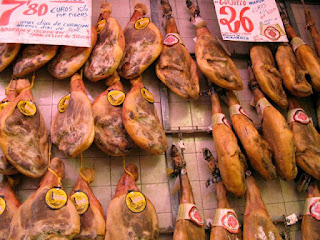
With a name as beautiful as its taste, it is still debatable how this classic French moulded dessert or its name come about.
Besides sponge biscuits, bread, sponge bread or biscuits are also used to line the mould, which is then filled with a fruits and whipped cream or custard.
The below Charlotte recipe was done with canned peach, making it very straightforward to make. Just make sure you give yourself plenty of time to set in the fridge.
Recipe source: unknown. It was a recipe Rémi found on some French website long ago and untraceable.
Charlotte with canned peach
serves 4-6
2 packets of sponge fingers biscuits
1 big can of peaches in syrup
250ml fresh cream
pinch of sugar (icing or castor)
pinch of salt
a few drops of vanilla essence
Before starting to whip fresh cream, leave the mixing bowl in freezer for 15 minutes. The fresh cream has to be cold (if you're using packet long-life cream, put into fridge an hour earlier).
Whip the cream until thick. Add the sugar, salt and vanilla essence.
To achieve the above look, you need to have a loose-based round baking tin. Although I didn't think of that when I made it yesterday, place the ring of the tin onto a serving dish.
Next is to start lining the tin with sponge fingers. Each time you do that, dip the biscuit BRIEFLY in the peach syrup.
Cut one end of the sponge fingers, and place them cut-end down to line round side of the tin. Use the leftover pieces and more biscuits if needed to line the bottom until the bottom is tightly packed.
Spread a generous layer of whipped cream over the sponge fingers base. Follow by a layer of sliced peaches. And then follow by another layer of sponge fingers (remember to dip in syrup first).
Top with another layer of whipped cream. And then cover with diced peaches.
Refrigerate for 4-6 hours before serving.
My charlotte didn't collapse when I remove the ring around it. If yours do, tie up with a thick ribbon, that should do the trick in keeping the biscuits in place.
Tips:
1. A big jelly mould can be used instead of ring tin. In this case, end the last layer with the sponge finger biscuits, cover with a plate, and unmould be inverting it.
2. Fruits like strawberries can be used in place of canned peach. In this case, make your own sweet syrup. Like making a syrup out of strawberry jam.
3. Custard can be used in place of whipped cream, though we've never tried that.
















